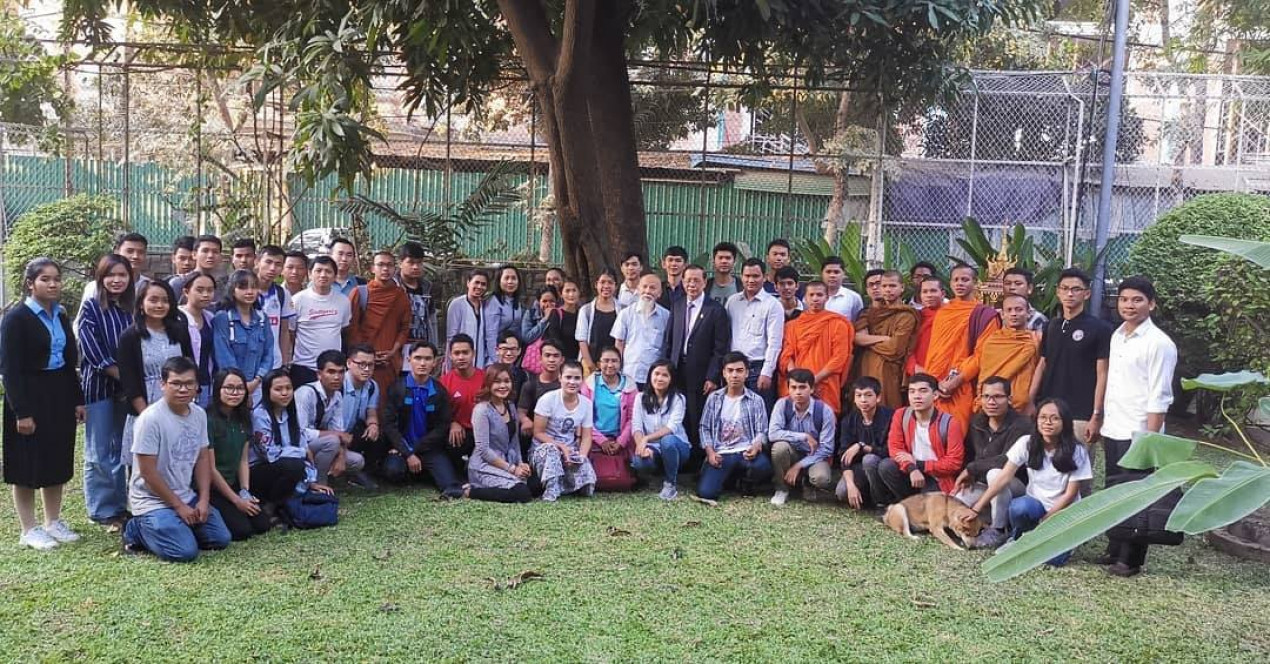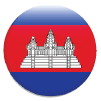
Why Knowledge of the Government Structure Matters for Young Cambodians

Written by: Khim Pichmolika, a 4th year student majoring in Global Affairs at The American University of Phnom Penh
Edited by: Sao Phal Niseiy, Editor-in-Chief at The Cambodianess and Deputy Editor-in-Chief at Thmey Thmey News

(Photo was taken after Politikoffee Forum on Saturday, 23rd November, 2019 at KAS Cambodia office on the topic: Cambodia's Political Situation: Division or Unification?")
Political literacy is reasonably a novel term that has not been mentioned frequently until recently in our society. The term political literacy, however, originated in England many decades ago. Bernard Crick (1969) first raised the argument for the introduction of politics in school that, “Since it cannot be avoided, it had better be faced. Since it should not be avoided, quite a lot of care and time should be given to it.” This sort of idea gave ways to political literacy, emphasizing the importance of politically literate citizens for the nature and logic of democracy. A politically educated population can access the chief policies of political parties as they can comprehend how democratic institutions work and their importance and knowledge to use their voice. Political literacy, in short, refers to the awareness of the society we are living in and aspects of our daily lives.
Political literacy itself can be confusing and intimidating since it has the word "political". Some people have ignored the general information concerning the government and its operations as they have been afraid of the political process and participation. Therefore, this article focuses on the Cambodian government structure because I want to draw more attention from Cambodians who might have been apathetic toward this fundamental topic.
I think understanding and scrutinizing the Cambodian government structure is critical for the general public, especially youths who are the potential future leaders of the country, for three reasons.
First, having a proper understanding of the structure will encourage them to get more actively involved with elections and enhance their experience quality. It can begin with a piece of knowledge on the commune/sangkat council. Commune/sangkat council is local governance elected by citizens of that commune/sangkat every five years. As one of a few groups formed through direct elections, this should prompt people to make good use of their chance of choosing representatives for the next five years. The commune/sangkat council members will be selected from the winning political party candidate lists. The numbers of seats also need to be proportionate to the numbers of council members determined under the Law on Commune/Sangkat Administration. Commonly, there would be a conflict of interest between a potential candidate and the party that the candidate belongs. Thus, this should be crucial information to be taken into account as they will have to decide whether to vote for the candidate or the party. When people make an informed and purposeful decision before casting their ballots, it will enhance the quality of their experience in shaping their community’s future.
Likewise, the above reasoning also applies to the national election through which the members of the National Assembly —the lower house of the country’s legislature— are elected every five years through a proportional representation system. The National Assembly consists of 125 seats divided by provincial and capital constituencies. The party holding most seats will become the ruling party. Then, the ruling party's representative will be appointed as the Prime Minister by the King with the recommendation of the President and Vice President of the National Assembly. To officially the prime minister, the appointee must receive a vote of confidence from the National Assembly.
Furthermore, this knowledge is also the foundational step and principal motivation to induce political will among youths who want to pursue a political career or become the leader of their own community. The absence of general knowledge regarding the government structure, not to mention its administration, prevents many people from going after their dreams in politics. Just like other occupations, being a politician can be achievable for highly ambitious and determined individuals. Many people can be potential candidates and representatives for the people in their community. For instance, a commune/sangkat administration is administered by a chief and deputy chiefs. Therefore, it can be a good start for prominent individuals who have earned a reputation or trust from people living in their respective community.
The commune/sangkat chief is the candidate that receives the majority of votes. With the same mandate as the commune/sangkat council chief, the first and second deputy chiefs receive the second and third majority of votes. Obtaining these positions does not require power or external assistance, but they need to earn enough support from local people. It can end all misunderstanding and stigma that demotivate people from chasing a political role.
As comprehending some parts of the structure established through direct and democratic elections incentivise people to actively partake in the political process, understanding the constituents chosen by indirect elections also helps people develop their capacity to scrutinise and shape the system.
For example, the Senate, which is the upper house of the Cambodian legislature, consists of 62 members who serve six-year teams. Two of them are appointed by the King, two others by members of the National Assembly, and the rest are elected by members of commune councils from 24 provinces of Cambodia and members of the National Assembly. The number of Senate seats increased from 57 seats to 58 seats after the new law of Senate Elections passed in 2017. The public has no control over what happens behind the election process, but they can choose the representatives in the Senate. If people are fully aware of the significance of their participation and can utilise their votes based on informed and purposeful decisions, their power will prevail.
Last but not least, although the structure is well-designed to prevent the concentration of power and ensure good governance, many informal institutions also work closely with and behind these formal institutions to influence the decision making process and policy formulation. As seen, there are competing interests between the public and the small groups of the political elites who have also played a crucial role in shaping the political system behind the scene. It is noteworthy that civil participation has been confined to just the election, which is just a part of the characteristics of democratic countries. Moreover, the corruption issue has still been prevalent in the governance system, even though the government has also taken steps to tackle it in response to the demand of people. Hence, the basic understanding of the government structure is a key to enabling Cambodians to meaningfully choose their representatives who could eventually influence public policies that benefit the general public.
*This blog is produced with the financial support from the European Union and The Swedish International Development Cooperation Agency through Transparency International Cambodia and ActionAid Cambodia. Its contents do not reflect the views of any donors.




